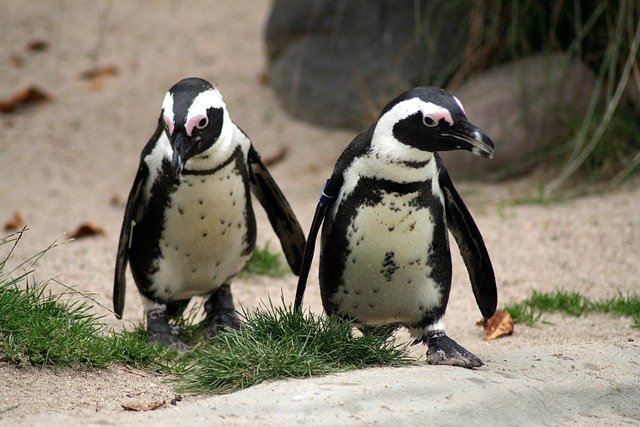**Title: "The Fascinating Social Structures of Penguin Colonies: How Community Shapes Survival"**

The Fascinating Social Structures of Penguin Colonies: How Community Shapes Survival
Penguins are not just adorable creatures waddling around in their tuxedo-like feathers; they are also remarkable social animals that exhibit complex social structures within their colonies. Understanding these social dynamics is crucial for appreciating how community life influences their survival and reproductive success.
The Colony Life
Penguins are highly social birds that often gather in large colonies, sometimes comprising thousands of individuals. These colonies serve as critical hubs for various activities such as breeding, feeding, and protection against predators. The sheer size of these colonies provides several advantages:
- Safety in Numbers: By living in large groups, penguins can better defend themselves against predators like seals and birds of prey. The collective vigilance of the group increases the chances of spotting threats early.
- Thermoregulation: In harsh Antarctic climates, penguins huddle together to conserve warmth. This behavior is especially important for species like the Emperor Penguin, which breeds during the coldest months of the year.
Social Hierarchies
Within these colonies, penguins establish social hierarchies that can influence mating success and resource access. Research has shown that certain individuals often dominate access to food sources and prime nesting sites. These hierarchies can be fluid, changing based on factors such as age, health, and breeding status.
The Role of Communication
Communication plays a vital role in maintaining social bonds and hierarchies within penguin colonies. Penguins employ a variety of vocalizations and body language to convey messages. For example:
- Vocal Calls: Each penguin has a unique call that helps mates and chicks identify each other in the bustling colony. This is crucial for parental care, as both parents take turns feeding and protecting their young.
- Physical Displays: Penguins often engage in physical displays, such as bowing or flapping their flippers, to assert dominance or attract mates.
Cooperative Breeding
Some penguin species, such as the Adélie Penguin, exhibit cooperative breeding behaviors. In these cases, non-breeding individuals may assist in raising chicks by helping with feeding and protection. This cooperation enhances the survival rates of the chicks and strengthens social bonds within the colony.
Challenges and Adaptations
Despite their strong social structures, penguin colonies face numerous challenges, including climate change, habitat loss, and overfishing. These factors can disrupt the delicate balance of their social dynamics, leading to increased competition for resources.
To adapt, penguins may change their foraging strategies or shift their breeding locations. Understanding these adaptations is crucial for conservation efforts aimed at protecting these fascinating social structures.
Conclusion
The social structures of penguin colonies are a testament to the power of community in the animal kingdom. By working together, penguins enhance their survival and reproductive success in some of the harshest environments on Earth. As we continue to study these remarkable birds, we gain valuable insights into the importance of social bonds in shaping the lives of animals. Protecting their habitats and ensuring the health of their colonies is vital for their future and the ecosystems they inhabit.
Feel free to share your thoughts or experiences with penguins in the comments below! 🐧✨

Upvoted! Thank you for supporting witness @jswit.